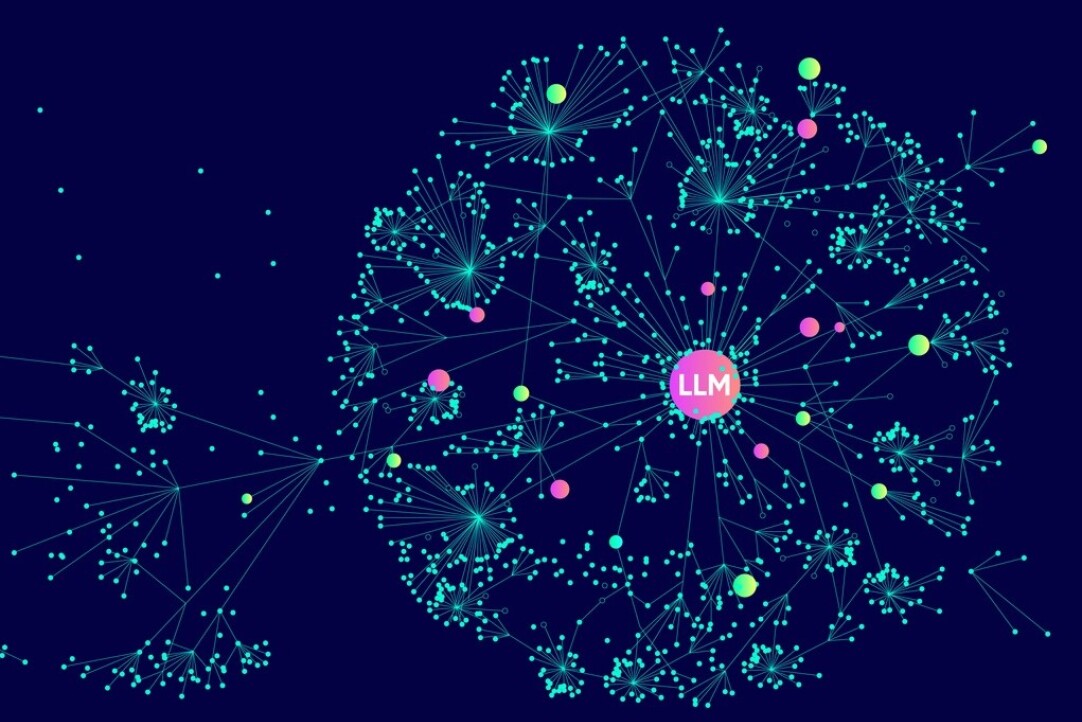Large Language Models No Longer Require Powerful Servers

Scientists from Yandex, HSE University, MIT, KAUST, and ISTA have made a breakthrough in optimising LLMs. Yandex Research, in collaboration with leading science and technology universities, has developed a method for rapidly compressing large language models (LLMs) without compromising quality. Now, a smartphone or laptop is enough to work with LLMs—there's no need for expensive servers or high-powered GPUs.
This method enables faster testing and more efficient implementation of new neural network-based solutions, reducing both development time and costs. As a result, LLMs are more accessible not only to large corporations, but also to smaller companies, non-profit laboratories and institutes, as well as individual developers and researchers.
Previously, running a language model on a smartphone or laptop required quantising on an expensive server—a process that could take anywhere from a few hours to several weeks. Quantisation can now be performed directly on a smartphone or laptop in just a few minutes.
Challenges in implementing LLMs
The main obstacle to using LLMs is that they require considerable computational power. This applies to open-source models as well. For example, the popular DeepSeek-R1 is too large to run even on high-end servers built for AI and machine learning workloads, meaning that very few companies can effectively use LLMs, even if the model itself is publicly available.
The new method reduces the model's size while maintaining its quality, making it possible to run on more accessible devices. This method allows even larger models, such as DeepSeek-R1 with 671 billion parameters and Llama 4 Maverick with 400 billion parameters, to be compressed, which until now could only be quantised using basic methods and resulted in significant quality loss.
The new quantisation method opens up more opportunities to use LLMs across various fields, particularly in resource-limited sectors such as education and the social sphere. Startups and independent developers can now implement compressed models to create innovative products and services without the need for costly hardware investments. Yandex is already applying the new method for prototyping—creating working versions of products and quickly validating ideas. Testing compressed models takes less time than testing the original versions.
Key details of the new method
The new quantisation method is named HIGGS (Hadamard Incoherence with Gaussian MSE-Optimal GridS). It enables the compression of neural networks without the need for additional data or computationally intensive parameter optimisation. This is especially useful in situations where there is not enough relevant data available to train the model. HIGGS strikes a balance between the quality, size, and complexity of the quantised models, making them suitable for use on a variety of devices.
The method has already been validated on the widely used Llama 3 and Qwen2.5 models. Experiments have shown that HIGGS outperforms all existing data-free quantisation methods, including NF4 (4-bit NormalFloat) and HQQ (Half-Quadratic Quantisation), in terms of both quality and model size.

Scientists from HSE University, the Massachusetts Institute of Technology (MIT), the Austrian Institute of Science and Technology (ISTA), and King Abdullah University of Science and Technology (KAUST, Saudi Arabia), all contributed to the development of the method.
The HIGGS method is already accessible to developers and researchers on Hugging Face and GitHub, with a research paper available on arXiv.
Response from the academic community, and other methods
The paper describing the new method has been accepted for presentation at one of the largest AI conferences in the world—the North American Chapter of the Association for Computational Linguistics (NAACL). The conference will be held from April 29 to May 4, 2025, in Albuquerque, New Mexico, USA, and Yandex will be among the attendees, along with other companies and universities such as Google, Microsoft Research, and Harvard University. The paper has been cited by Red Hat AI, an American software company, as well as Peking University, Hong Kong University of Science and Technology, Fudan University, and others.
Previously, scientists from Yandex presented 12 studies focused on LLM quantisation. The company aims to make the application of LLMs more efficient, less energy-consuming, and accessible to all developers and researchers. For example, the Yandex Research team has previously developed methods for compressing LLMs, which reduce computational costs by nearly eight times, while not significantly compromising the quality of the neural network’s responses. The team has also developed a solution that allows running a model with 8 billion parameters on a regular computer or smartphone through a browser interface, even without major computational power.
See also:
Scientists Test Asymmetry Between Matter and Antimatter
An international team, including scientists from HSE University, has collected and analysed data from dozens of experiments on charm mixing—the process in which an unstable charm meson oscillates between its particle and antiparticle states. These oscillations were observed only four times per thousand decays, fully consistent with the predictions of the Standard Model. This indicates that no signs of new physics have yet been detected in these processes, and if unknown particles do exist, they are likely too heavy to be observed with current equipment. The paper has been published in Physical Review D.
HSE Scientists Reveal What Drives Public Trust in Science
Researchers at HSE ISSEK have analysed the level of trust in scientific knowledge in Russian society and the factors shaping attitudes and perceptions. It was found that trust in science depends more on everyday experience, social expectations, and the perceived promises of science than on objective knowledge. The article has been published in Universe of Russia.
Scientists Uncover Why Consumers Are Reluctant to Pay for Sugar-Free Products
Researchers at the HSE Institute for Cognitive Neuroscience have investigated how 'sugar-free' labelling affects consumers’ willingness to pay for such products. It was found that the label has little impact on the products’ appeal due to a trade-off between sweetness and healthiness: on the one hand, the label can deter consumers by implying an inferior taste, while on the other, it signals potential health benefits. The study findings have been published in Frontiers in Nutrition.
HSE Psycholinguists Launch Digital Tool to Spot Dyslexia in Children
Specialists from HSE University's Centre for Language and Brain have introduced LexiMetr, a new digital tool for diagnosing dyslexia in primary school students. This is the first standardised application in Russia that enables fast and reliable assessment of children’s reading skills to identify dyslexia or the risk of developing it. The application is available on the RuStore platform and runs on Android tablets.
Physicists Propose New Mechanism to Enhance Superconductivity with 'Quantum Glue'
A team of researchers, including scientists from HSE MIEM, has demonstrated that defects in a material can enhance, rather than hinder, superconductivity. This occurs through interaction between defective and cleaner regions, which creates a 'quantum glue'—a uniform component that binds distinct superconducting regions into a single network. Calculations confirm that this mechanism could aid in developing superconductors that operate at higher temperatures. The study has been published in Communications Physics.
Neural Network Trained to Predict Crises in Russian Stock Market
Economists from HSE University have developed a neural network model that can predict the onset of a short-term stock market crisis with over 83% accuracy, one day in advance. The model performs well even on complex, imbalanced data and incorporates not only economic indicators but also investor sentiment. The paper by Tamara Teplova, Maksim Fayzulin, and Aleksei Kurkin from the Centre for Financial Research and Data Analytics at the HSE Faculty of Economic Sciences has been published in Socio-Economic Planning Sciences.
Larger Groups of Students Use AI More Effectively in Learning
Researchers at the Institute of Education and the Faculty of Economic Sciences at HSE University have studied what factors determine the success of student group projects when they are completed with the help of artificial intelligence (AI). Their findings suggest that, in addition to the knowledge level of the team members, the size of the group also plays a significant role—the larger it is, the more efficient the process becomes. The study was published in Innovations in Education and Teaching International.
New Models for Studying Diseases: From Petri Dishes to Organs-on-a-Chip
Biologists from HSE University, in collaboration with researchers from the Kulakov National Medical Research Centre for Obstetrics, Gynecology, and Perinatology, have used advanced microfluidic technologies to study preeclampsia—one of the most dangerous pregnancy complications, posing serious risks to the life and health of both mother and child. In a paper published in BioChip Journal, the researchers review modern cellular models—including advanced placenta-on-a-chip technologies—that offer deeper insights into the mechanisms of the disorder and support the development of effective treatments.
Using Two Cryptocurrencies Enhances Volatility Forecasting
Researchers from the HSE Faculty of Economic Sciences have found that Bitcoin price volatility can be effectively predicted using Ethereum, the second-most popular cryptocurrency. Incorporating Ethereum into a predictive model reduces the forecast error to 23%, outperforming neural networks and other complex algorithms. The article has been published in Applied Econometrics.
Administrative Staff Are Crucial to University Efficiency—But Only in Teaching-Oriented Institutions
An international team of researchers, including scholars from HSE University, has analysed how the number of non-academic staff affects a university’s performance. The study found that the outcome depends on the institution’s profile: in research universities, the share of administrative and support staff has no effect on efficiency, whereas in teaching-oriented universities, there is a positive correlation. The findings have been published in Applied Economics.


